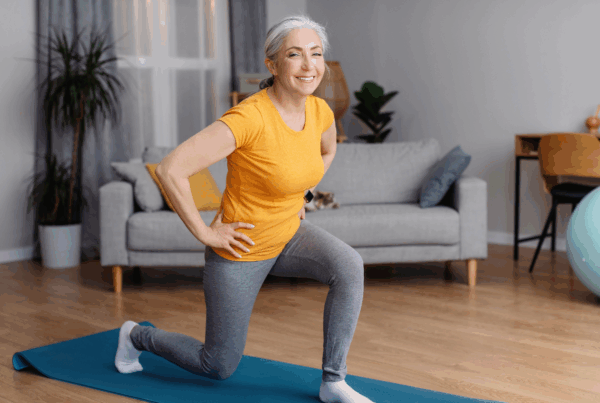My name is Biara. I’m an exercise physiologist with Specialised Health. In August this year, we received a referral for a man I will hereforth call Bob. Bob is a 44 year old man. In May this year, he suffered a spontaneous pneumothorax, then developed subcutaneous emphysema. Pneumothorax is the presence of air in the pleural space between the membrane around the lungs and around the chest cavity and the subcutaneous emphysema is air under the skin. He had a drainage surgery and remained in hospital for six weeks.
Then, we saw him in August. We had the initial assessment, tested his aerobic fitness and functional capacity as well as identified any barriers. He presented with mild breathlessness as expected, and additional barriers highlighted include pain around the surgical site, around his left ribs, poor posture, and overuse of accessory breathing muscles, which is, obviously, very common in COPD and pulmonary disorders. He also presented with potential mood disorders such as high fatigue, low motivation, stress, and fear avoidance of activity, which is potentially dangerous, as rest and avoidance of exercise is a major contributor of pneumothorax recurrences.

When we first saw Bob, he was a handyman, a carpenter, and wanted to get back into that work. He was currently not working at all. He identified five tasks he was struggling with, which were prerequisites to fitness and strength based activities required for his work. He perceived to have about a 36% ability to complete these tasks. By the end of the service, he reported 100% ability, i.e. no concern with these tasks. He was also returned to paid work.
At the initial assessment, he reported difficulty taking deep breaths, a pain level of five out of 10, fatigue level eight out of 10, and required rest after one hour of light cleaning at home as well as 90 minutes naps every two days.
At the final assessment, he reported no issues in breathing, rated his pain at zero, fatigue at three. He no longer required rest after one hour’s light work and was no longer napping during the day. These results were achieved after six sessions over 12 weeks. Sessions commenced weekly with focus on improving breathing through the use of the diaphragm and improved posture and a focus on increasing his confidence with normal levels of breathlessness from exertion.
The load and intensity of each session were increased progressively, and he was provided support to self-manage this. We also educated him about pacing, which is important for both his pulmonary health as well as his fatigue levels. As his exercise confidence increased, we introduced further manual handling and strength based exercises, and now he has no restrictions. I guess the main thing we look at with patients is the patient. We didn’t just treat his pulmonary condition. We looked at all aspects of his health and managed accordingly.


